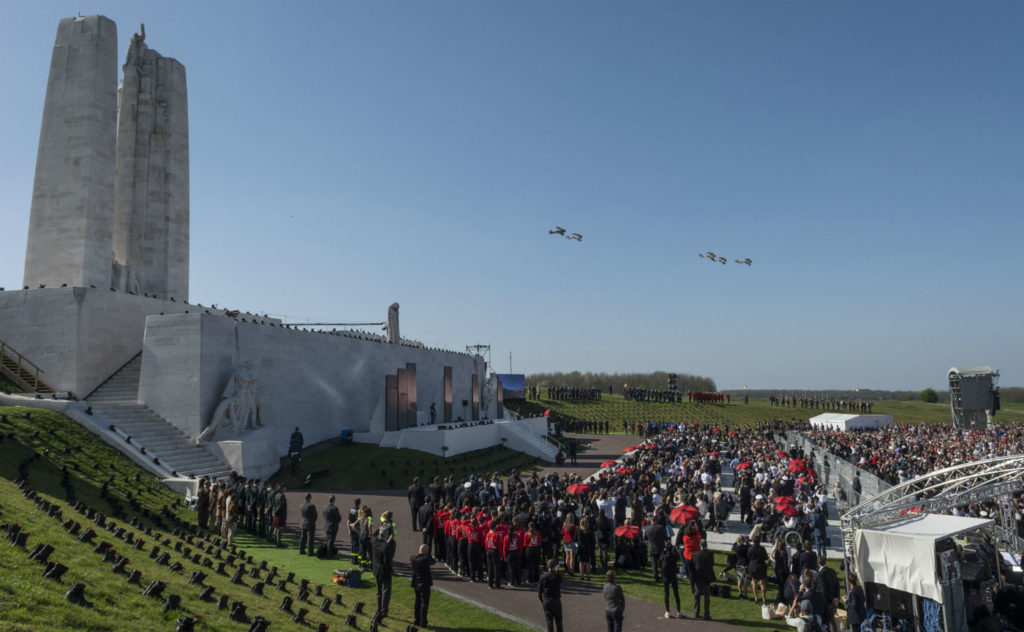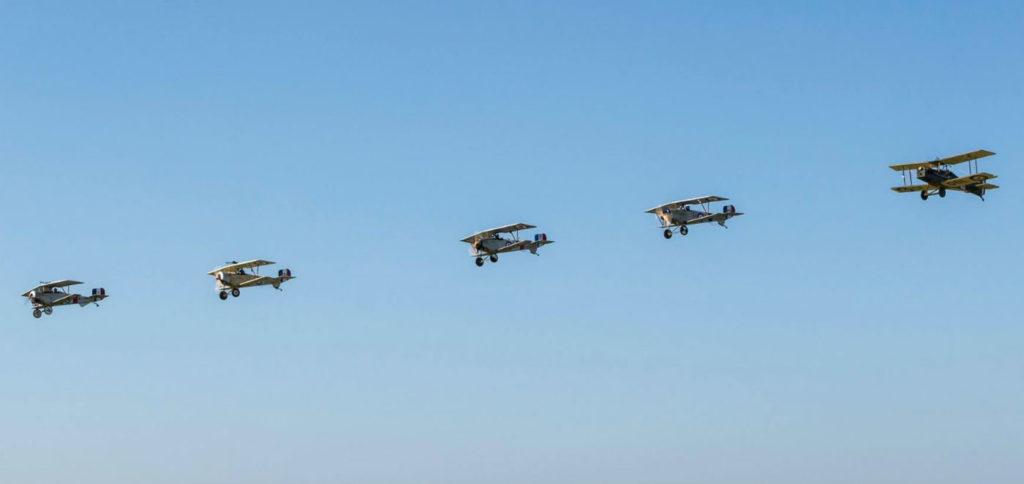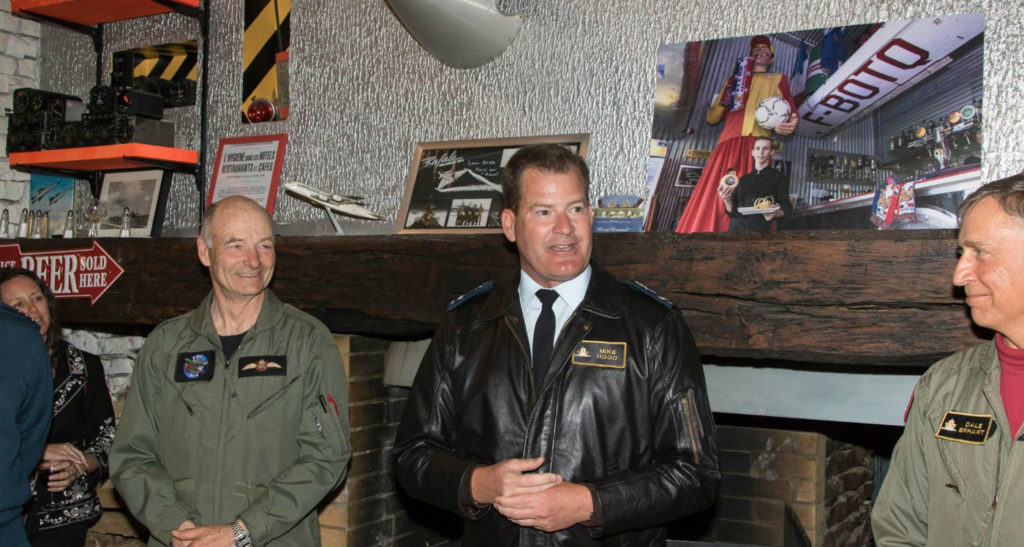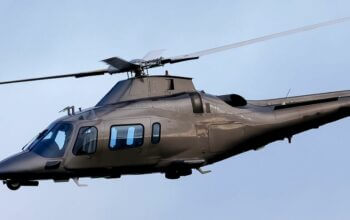Estimated reading time 5 minutes, 45 seconds.
Allan Snowie flew over the Vimy memorial in France on April 9 as the pilot of a Royal Aircraft Factory S.E.5a replica biplane, part of a five-aircraft formation of Canadian pilots there to mark the 100th anniversary of the Battle of Vimy Ridge.

Tired and still processing the event a day later, he struggled at times to explain how it felt. But he admitted it produced an emotional high. As he flew by the monument, he tried not to be mesmerized by what he saw.
“[I was] sitting on the edge of my seat, because in the bumpy afternoon air–I know why they call them kites,” said Snowie, who flew as part of Vimy Flight, an organization of four former military pilots and one current Royal Canadian Air Force (RCAF) pilot who participated in the ceremony.
“They get tossed around a bit, and so flypast–a tense time in the air and trying to hold formation … It was a good run, and we all felt very good about it when we got back to our base.”
Along with Snowie’s S.E.5a, Vimy Flight included four Nieuport XI replica biplanes flown by Dale Erhart, Peter Thornton, Larry Ricker and current RCAF Capt Brent Handy.
They were a key part of Canada’s contribution to the ceremony, which reportedly drew as many as 25,000 people, including Prime Minister Justin Trudeau and Governor General David Johnston.
The Battle of Vimy Ridge is considered one of the most important battles in Canada’s history, and a key moment in the formation of the nation. It left 3,598 Canadians dead and 7,000 injured but resulted in the successful capturing of the ridge.

“These ordinary and extraordinary men of the British dominion fought for the first time as citizens of one and the same country,” Trudeau said in French as he addressed the crowd, according to the Canadian Press.
“Francophones and anglophones. New Canadians. Indigenous peoples. Side by side, united, here in Vimy, within the four divisions of the Canadian Corps.”
Johnston referenced two massive columns on the Vimy memorial behind him as he spoke.
“Those spires stand for peace and for freedom,” he said. “They stand for justice and hope. And they remind us that one cannot exist without the other. Without freedom, there can be no peace. Because freedom without peace is agony, and peace without freedom is slavery.”
Prince Charles, representing the British monarchy, also spoke at the ceremony.
“This was and remains the single bloodiest day in Canadian military history,” he said.
“Yet Canadians displayed a strength of character and commitment to one another that is still evident today. They did not waver. This was Canada at its best.”

The five replica planes from Canada are slated to be loaded into an RCAF CC-177 Globemaster and transported home ahead of a national tour this summer that will draw attention to Vimy and its legacy.
As for Snowie, he hoped Vimy Flight’s involvement in the anniversary ceremony was a proper salute to those who fought in the battle. While Sunday was clear and sunny, he said soldiers faced blizzard conditions during the actual battle 100 years ago.
“Some of the pilots got airborne, but they couldn’t mark their targets because of the weather conditions,” he said.
“We arrived here with long johns and heavy flying clothing. We left our jackets down yesterday. We were just wearing flying suits.”
He reflected on how Canada became a nation in a sense through Vimy, with soldiers from many regions and walks of life bonded in war.
“Canada became a nation emotionally that day,” he said. “The guy from Edmonton doesn’t really know the fisherman from Nova Scotia. The Quebecois doesn’t really know who this West Coast character is.
“But you put them all together in a situation like that, and they’re bonded–bonded by blood.”
More information on Vimy Flight can be found here.








